- Preparing Cuttings for Winter Storage
- 1. Select Healthy Cuttings
- 2. Trim and Clean Cuttings
- 3. Apply Rooting Hormone
- 4. Wrap Cuttings in Damp Paper Towels
- 5. Store Cuttings in a Cool, Dark Place
- 6. Check Cuttings Regularly
- Choosing the Right Storage Location
- 1. Cool and Dark
- 2. Ventilation
- 3. Humidity Control
- 4. Pest-Free Environment
- 5. Organization
- 6. Check Regularly
- Proper Packaging Techniques
- Gather the Necessary Materials
- Prepare the Packaging
- Wrap the Cuttings
- Seal the Package
- Label the Package
- Store in a Cool Location
- Recommended Temperature and Humidity Levels
- Temperature
- Humidity
- Monitoring and Care during Storage
- 1. Temperature Control:
- 2. Humidity:
- 3. Ventilation:
- 4. Inspecting Regularly:
- 5. Moisture Content:
- 6. Labeling:
- 7. Pests and Rodents:
- 8. Length of Storage:
- Protecting Cuttings from Pests and Diseases
- Tips for Successful Winter Planting
- 1. Choose Cold-Hardy Varieties
- 2. Prepare the Soil
- 3. Provide Adequate Protection
- 4. Water Properly
- 5. Prune and Train
- 6. Monitor for Pests and Diseases
- 7. Provide Support
- 8. Be Patient
- Conclusion
- Question-answer:
- What are grape cuttings and why would someone want to store them?
- How should grape cuttings be stored for winter planting?
- How long can grape cuttings be stored for winter planting?
- Can any grape vine be used for cuttings?
- Are there any special requirements for preparing grape cuttings for storage?
- Can grape cuttings be stored without being rooted?
- Is it possible to use stored grape cuttings for propagation more than once?
- Video: Growing grapes in pots from cutting until harvest in 240 days | Growing grapes in tropical country.
Growing grapes is a rewarding hobby that can be enjoyed by both experienced gardeners and beginners alike. With proper care and attention, grape vines can yield abundant and delicious fruit. However, the process of propagating grape vines from cuttings can sometimes be challenging, especially when it comes to storing the cuttings for winter planting.
Storing grape cuttings during the winter months requires careful preparation and a few simple tricks to ensure their viability. One important factor to consider is the timing of the cutting collection. The best time to take grape cuttings for winter storage is in late fall, after the leaves have dropped and the vines have entered their dormant phase.
Once the cuttings have been collected, it is crucial to provide them with the proper storage conditions. The ideal temperature for storing grape cuttings is between 32°F and 40°F (0°C and 4.4°C). It is also important to keep the cuttings moist, but not wet, during storage. This can be achieved by placing the cuttings in a container with damp sawdust or sand, or wrapping them in moist paper towels.
In addition to temperature and moisture, it is essential to protect the grape cuttings from fungal and bacterial infections. This can be done by treating the cuttings with a fungicide before storage and ensuring good air circulation around the storage container. It is also recommended to inspect the cuttings regularly during storage and remove any that show signs of rot or disease.
By following these tips and tricks, gardeners can successfully store grape cuttings for winter planting. With proper storage and care, these cuttings can be transplanted in the spring to establish healthy and productive grape vines.
Preparing Cuttings for Winter Storage
If you plan on planting grape cuttings in the winter, it’s important to properly prepare them for storage to ensure their survival during the cold months. Here are some tips and tricks to help you prepare your grape cuttings for winter storage:
1. Select Healthy Cuttings
When choosing grape cuttings for storage, make sure to select healthy and disease-free cuttings. Look for cuttings that have well-developed buds and are free from any signs of damage or disease.
2. Trim and Clean Cuttings
Before storing your grape cuttings, it’s important to trim them to a manageable length. Cut the cuttings to a length of about 8-12 inches, making sure to remove any excess leaves and buds. You can use clean pruning shears to make clean cuts.
After trimming, gently clean the cuttings to remove any dirt or debris. You can wash them in a mild solution of water and dish soap, and then rinse them thoroughly with clean water.
3. Apply Rooting Hormone
To promote the growth of roots, you can apply rooting hormone to the cut ends of the grape cuttings. This hormone will help stimulate root development and increase the chances of successful rooting.
Follow the instructions on the rooting hormone packaging for the appropriate application method and dosage.
4. Wrap Cuttings in Damp Paper Towels
After applying the rooting hormone, gently wrap each grape cutting in a damp paper towel. This will help keep the cuttings moist during storage and prevent them from drying out.
Make sure the paper towels are damp and not dripping wet. Excess moisture can lead to rotting of the cuttings.
5. Store Cuttings in a Cool, Dark Place
Find a cool and dark place to store your wrapped grape cuttings for the winter. A basement or garage with a temperature between 30-40°F (0-4°C) is ideal.
Avoid storing the cuttings near sources of heat or direct sunlight, as this can dry them out or cause them to sprout prematurely.
6. Check Cuttings Regularly
During the winter months, it’s important to check your stored grape cuttings regularly for signs of mold, rot, or drying out. If you notice any issues, remove the affected cuttings to prevent further damage.
If any cuttings have started to sprout roots or buds, you can plant them earlier than planned, adjusting your planting schedule accordingly.
Following these tips and tricks will help you prepare your grape cuttings for winter storage and increase the chances of successful planting in the spring. With proper care and attention, your grape cuttings will be ready to thrive in the warmer months ahead.
Choosing the Right Storage Location

When it comes to storing grape cuttings for winter planting, choosing the right storage location is crucial to their survival. The ideal storage location should provide the right conditions to keep the cuttings dormant and protect them from extreme temperatures and moisture. Here are some tips to help you choose the right storage location:
1. Cool and Dark
A cool and dark location is best for storing grape cuttings. This helps maintain a consistent temperature and prevents them from sprouting prematurely. Look for a storage area that is dark and has a temperature between 32°F and 45°F (0°C and 7°C). Avoid areas that are susceptible to temperature fluctuations or direct sunlight.
2. Ventilation
Good air circulation is important to prevent the cuttings from developing mold or rotting. Choose a storage location that provides adequate ventilation while still maintaining a cool temperature. If possible, place the cuttings in a well-ventilated room or use a fan to circulate the air.
3. Humidity Control
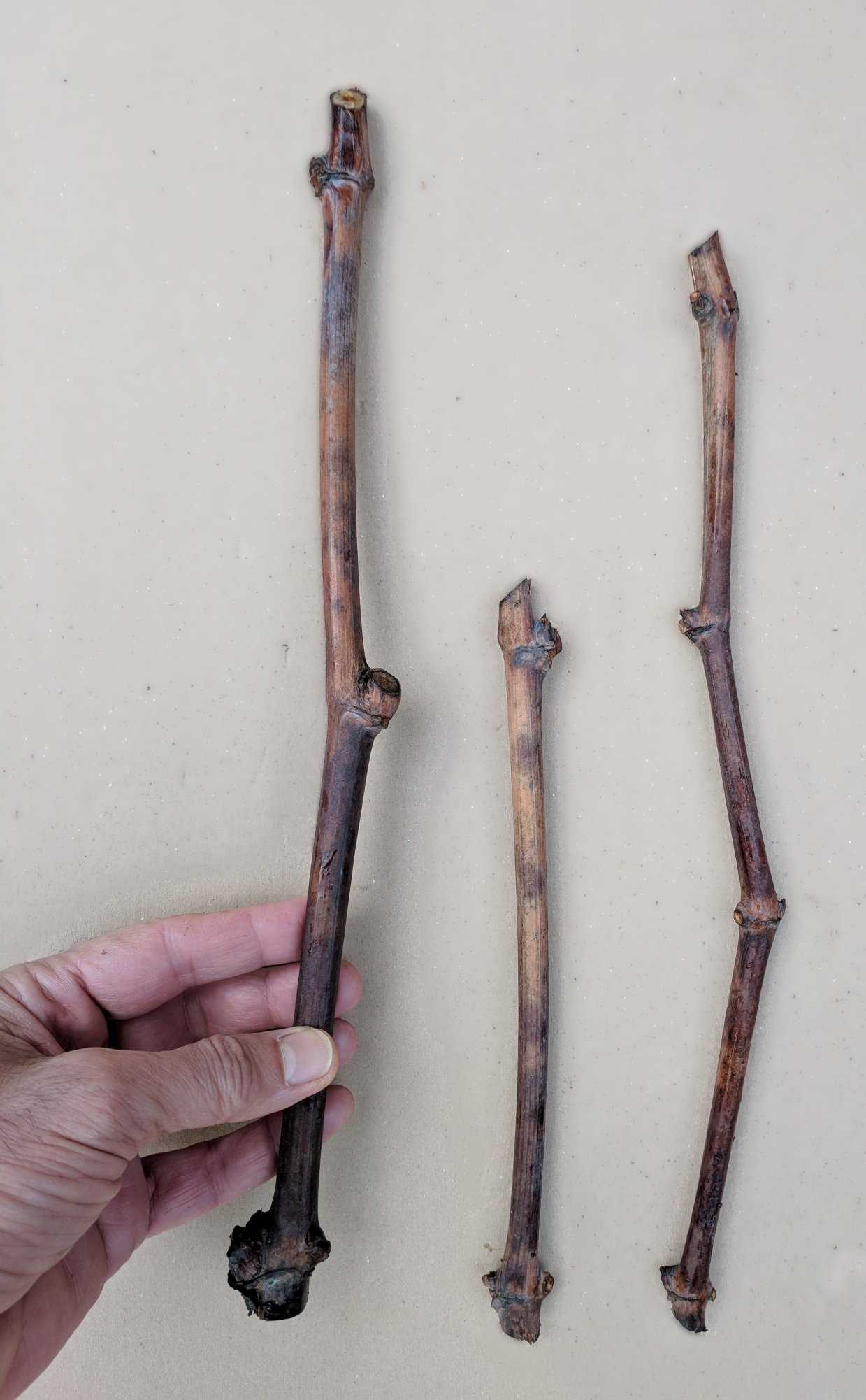
Excess moisture can cause the cuttings to rot, so it is important to control humidity levels in the storage location. Ideally, the humidity should be around 50-70%. Avoid storing the cuttings in areas that are prone to high humidity, such as basements or damp rooms.
4. Pest-Free Environment
Make sure the storage location is free from pests, such as rodents or insects, that can damage the cuttings. Inspect the area before storing the cuttings and take necessary measures to eliminate any existing pests, if needed.
5. Organization
Keeping the stored grape cuttings organized is essential for easy retrieval and monitoring. Use labeled containers or bags to store the cuttings, making sure to indicate the variety and date of collection. This will help you keep track of the cuttings and easily identify them when it’s time for planting.
6. Check Regularly
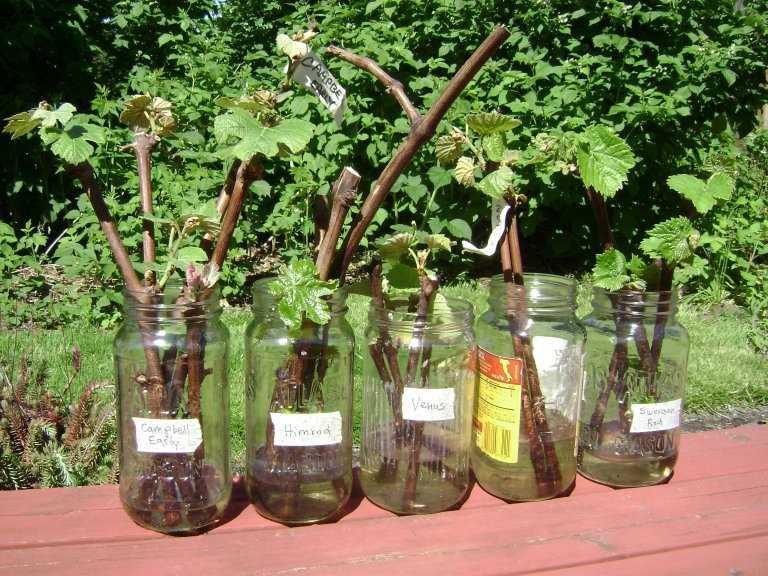
Regularly check on the stored grape cuttings to ensure they are in good condition. Inspect for any signs of mold, rot, or pests, and promptly discard any affected cuttings. Monitoring the storage area will help you catch any issues early on and take the necessary actions to protect the remaining cuttings.
By choosing the right storage location for your grape cuttings, you can increase their chances of survival and ensure healthy growth when it’s time for planting.
Proper Packaging Techniques
Proper packaging is crucial when storing grape cuttings for winter planting. By following these techniques, you can ensure the cuttings remain healthy and viable until spring.
Gather the Necessary Materials
Before you start packaging the grape cuttings, gather all the necessary materials. You will need:
- Plastic bags
- Moistened paper towels
- Sawdust or peat moss
- Elastic bands or twist ties
- Permanent marker
Prepare the Packaging
Take a plastic bag and moisten a paper towel. Place the paper towel at the bottom of the plastic bag. This will help keep the cuttings hydrated during storage. You can also add a layer of sawdust or peat moss to provide additional moisture retention and insulation.
Wrap the Cuttings
Take the grape cuttings and wrap them loosely in another moistened paper towel. This will further protect the cuttings and prevent them from drying out. Place the wrapped cuttings on top of the first layer in the plastic bag.
Seal the Package
Once the cuttings are in place, seal the plastic bag. Use an elastic band or a twist tie to secure the top of the bag and prevent air from entering. Make sure the seal is tight but not too tight to avoid damaging the cuttings.
Label the Package
Use a permanent marker to label the plastic bag with the variety of grape, the date of packaging, and any other pertinent information. This will help you keep track of the cuttings and ensure you know what’s inside each package.
Store in a Cool Location
Finally, store the packaged grape cuttings in a cool location such as a basement or a refrigerator. The temperature should be around 30 to 40 degrees Fahrenheit (-1 to 4 degrees Celsius). This will keep the cuttings dormant and prevent them from sprouting prematurely.
By following these proper packaging techniques, you can increase the chances of successful winter storage and ensure healthy grape cuttings for planting in the spring.
Recommended Temperature and Humidity Levels
Proper temperature and humidity levels are crucial for keeping grape cuttings intact and viable during winter storage. By creating a favorable environment, you can increase the chances of successful planting in the spring.
Temperature
The ideal temperature for storing grape cuttings is between 30°F (-1°C) and 40°F (4°C). This range ensures that the cuttings remain dormant without freezing or experiencing extreme temperature fluctuations. Too high temperatures can cause premature bud break, while freezing temperatures can damage the plant material.
Humidity
Maintaining an appropriate level of humidity helps prevent desiccation and keeps the grape cuttings from drying out. Aim for a humidity level of 70-80% to provide enough moisture without creating excessive dampness that can promote mold or fungal growth. Using a hygrometer or humidity monitor can help you monitor and adjust the humidity levels if necessary.
To maintain the desired humidity, you can use various methods:
- Place the grape cuttings in plastic bags or containers with lids, leaving them slightly open to allow some air circulation while retaining moisture.
- Use humidity trays or shallow containers filled with water to increase the moisture in the storage area.
- Mist the cuttings with water regularly to prevent them from drying out. Be careful not to oversaturate them, as it can lead to rot.
Remember that the specific temperature and humidity requirements may vary depending on the grape variety and the storage conditions available. It’s always recommended to consult with local experts or your local agricultural extension office for specific guidelines tailored to your region.
Monitoring and Care during Storage
Proper monitoring and care during the storage of grape cuttings are essential to ensure their viability for winter planting. Here are some tips and tricks to keep in mind:
1. Temperature Control:
Grape cuttings should be stored in a cool location with temperature ranging between 30°F to 40°F (-1°C to 4°C). Avoid exposing them to freezing temperatures, as it may damage the cuttings.
2. Humidity:
Maintaining the right level of humidity is crucial for the storage of grape cuttings. The humidity should be kept around 90-95% to prevent dehydration of the cuttings. Use a humidity meter or hygrometer to monitor and adjust the humidity level if needed.
3. Ventilation:
Proper ventilation is necessary to prevent the growth of mold and fungi on the grape cuttings. Ensure there is sufficient airflow around the stored cuttings. However, avoid exposing them to direct drafts.
4. Inspecting Regularly:
Regularly inspect the stored grape cuttings for any signs of decay or disease. Remove any affected cuttings immediately to prevent the spread of infection to healthy ones.
5. Moisture Content:
Check the moisture content of the storage medium or substrate used for grape cuttings. The substrate should be moist but not overly wet. Excess moisture can lead to rotting, while insufficient moisture can cause dehydration.
6. Labeling:

Label each batch or variety of grape cuttings to keep track of them easily. Include important information such as the variety name, date of collection, and any relevant notes regarding the cuttings.
7. Pests and Rodents:
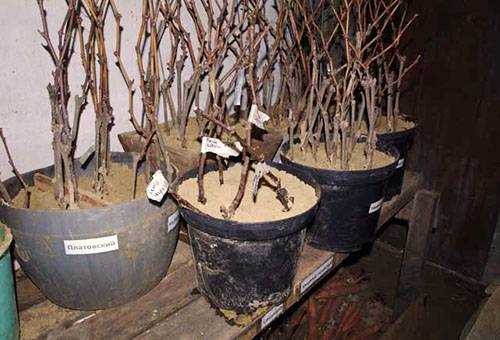
Take precautions to prevent pests and rodents from infesting the stored grape cuttings. Keep the storage area clean and use appropriate pest control methods if necessary.
8. Length of Storage:
Generally, grape cuttings can be stored for a few months before planting. However, check the viability of the cuttings periodically by performing a simple scratch test. If the buds are green and show signs of growth, the cuttings are still viable for planting.
By following these monitoring and care tips during storage, you can ensure the success of your grape cuttings for winter planting.
Protecting Cuttings from Pests and Diseases
When storing grape cuttings for winter planting, it’s important to protect them from pests and diseases. Here are some tips to ensure the health of your cuttings during storage:
- Cleanliness: Before storing the cuttings, make sure they are clean and free from any signs of pests or diseases. Remove any damaged or infected portions of the cuttings.
- Sanitization: Disinfect the storage containers and tools that will come into contact with the cuttings. This will help prevent the spread of diseases and pests.
- Adequate airflow: Ensure that there is adequate airflow around the stored cuttings. This can help prevent the growth of mold or other fungi that can damage the cuttings.
- Temperature control: Maintain a consistent temperature in the storage area. Extreme temperature fluctuations can stress the cuttings and make them more susceptible to pests and diseases.
- Pest control: Regularly inspect the stored cuttings for any signs of pests, such as insects or rodents. If pests are detected, take appropriate measures to eliminate them before they can cause damage.
- Fungicide treatment: Consider treating the cuttings with a fungicide before storing them. This can help protect against fungal diseases that may be present in the storage area.
- Labeling: Properly label the storage containers to ensure that you can easily identify the cuttings. This will help you keep track of the varieties and prevent any mix-ups.
By following these tips, you can help protect your grape cuttings from pests and diseases during winter storage. This will increase their chances of survival and ensure healthy plants when it’s time for planting.
Tips for Successful Winter Planting
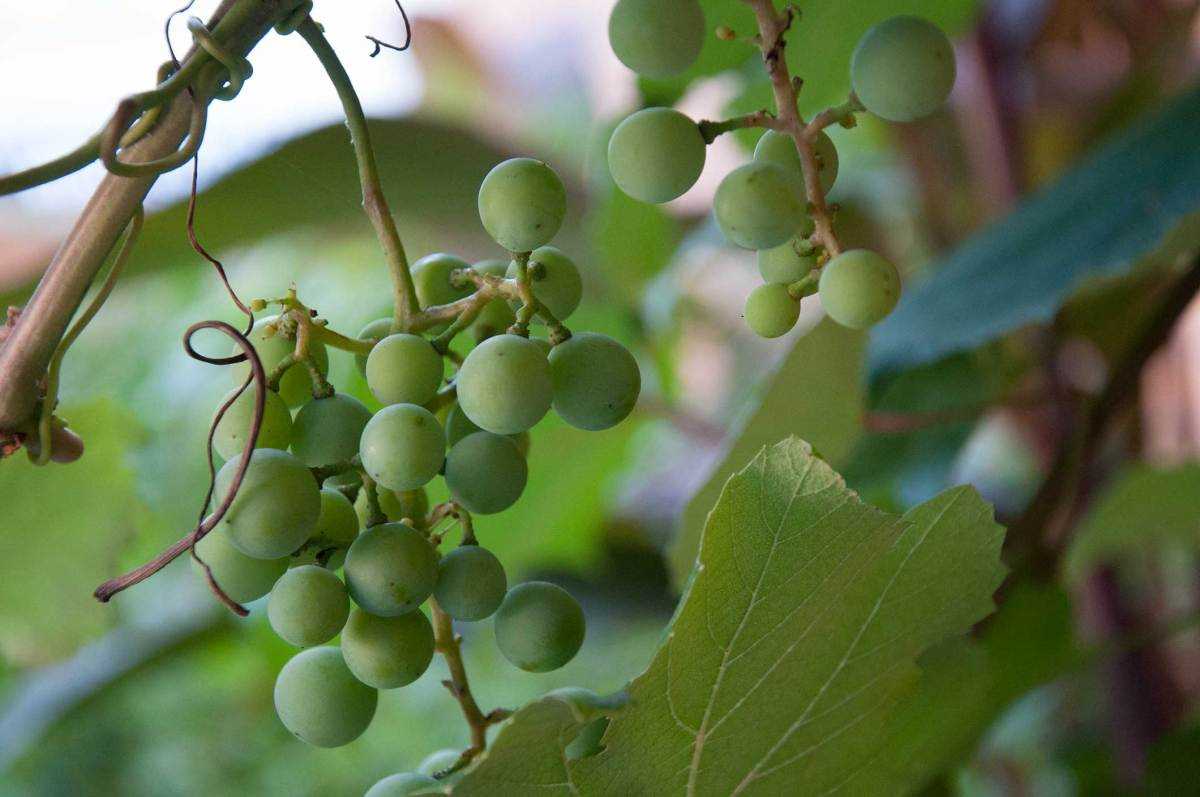
1. Choose Cold-Hardy Varieties
When selecting grape varieties for winter planting, choose those that are known to be cold-hardy. Look for varieties that are suitable for your specific climate and can withstand the freezing temperatures of winter.
2. Prepare the Soil
Before planting grape cuttings in winter, it is important to prepare the soil beforehand. Clear the planting area of any weeds or debris and ensure that the soil is well-draining. You can also amend the soil with organic matter or compost to improve its fertility and drainage.
3. Provide Adequate Protection
Winter planting exposes grape cuttings to harsh conditions, so it is important to provide them with adequate protection. One way to protect them is by adding a layer of mulch around the plants to insulate the soil and help regulate temperature fluctuations. You can also use protective covers or cloths to shield them from heavy winds or frost.
4. Water Properly
While grape cuttings may not require as much water during winter as they do in spring or summer, it is still important to provide them with adequate moisture. Water the plants when the soil is dry, but be cautious not to overwater, as this can lead to root rot. It is best to water deeply and less frequently.
5. Prune and Train
Winter is also a great time to prune and train your grape vines. Pruning helps to remove dead or weak growth, improves air circulation, and promotes better fruit production. Training the vines also helps to create a well-structured and manageable plant. Be sure to follow proper pruning and training techniques for grape vines.
6. Monitor for Pests and Diseases
Even during winter, grape vines can be susceptible to pests and diseases. Keep an eye out for signs of infestation or disease and take appropriate measures to control them. This may include using organic insecticides or fungicides and regularly inspecting the plants for any issues.
7. Provide Support
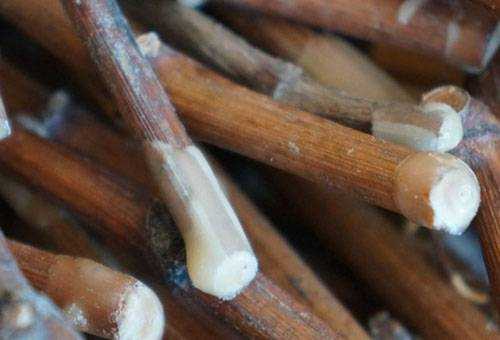
Grape vines require support as they grow, especially during the winter when strong winds or heavy snowfall can cause damage. Install sturdy trellises or support systems to help the vines grow upright and prevent them from bending or breaking under the weight of snow or ice.
8. Be Patient
Winter planting can be challenging, but it’s important to be patient and give the grape cuttings time to establish themselves. It may take some time for the plants to break dormancy and begin to grow in spring. Provide them with the necessary care and attention, and you will soon see them thrive.
Conclusion
By following these tips for successful winter planting, you can ensure that your grape cuttings survive the winter and grow into healthy, productive vines in the following seasons. Remember to choose cold-hardy varieties, prepare the soil, provide protection, water properly, prune and train, monitor for pests and diseases, provide support, and be patient. With proper care and attention, your winter-planted grape vines will thrive and reward you with a bountiful harvest.
Question-answer:
What are grape cuttings and why would someone want to store them?
Grape cuttings are small pieces of vine that can be planted to grow new grape vines. People may want to store grape cuttings for winter planting because it allows them to choose the healthiest and most vigorous vines, and also provides an opportunity to propagate specific grape varieties that may not be readily available in nurseries.
How should grape cuttings be stored for winter planting?
Grape cuttings should be stored in a cool and moist environment. They can be wrapped in damp paper towels or newspaper, placed in a plastic bag, and then stored in a refrigerator or a cool basement. It is important to keep the cuttings from drying out during storage.
How long can grape cuttings be stored for winter planting?
Grape cuttings can be stored for several months, typically from late fall to early spring. It is important to periodically check the cuttings during storage to make sure they are not drying out or developing mold.
Can any grape vine be used for cuttings?
Most grape varieties can be used for cuttings, but it is important to choose healthy vines that are free from diseases and pests. Some varieties may root more easily than others, so it helps to do some research and choose varieties that are known to produce good results when propagated from cuttings.
Are there any special requirements for preparing grape cuttings for storage?
Prior to storage, it is recommended to dip the ends of the cuttings in rooting hormone to encourage root growth. It is also important to label the cuttings with the variety and date of collection to keep track of them during storage.
Can grape cuttings be stored without being rooted?
Yes, grape cuttings can be stored without being rooted. In fact, it is often preferred to store them before they start to root to maintain their vitality. The cuttings can be rooted in the spring, once the soil has warmed up and the risk of frost has passed.
Is it possible to use stored grape cuttings for propagation more than once?
Yes, it is possible to use stored grape cuttings for propagation more than once. However, the success rate may decrease with each subsequent use, as the vitality of the cuttings decreases over time. It is recommended to use the stored cuttings within one or two seasons for the highest chance of success.







